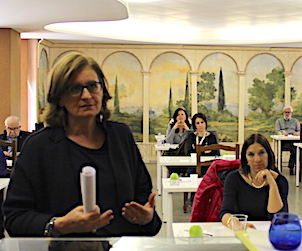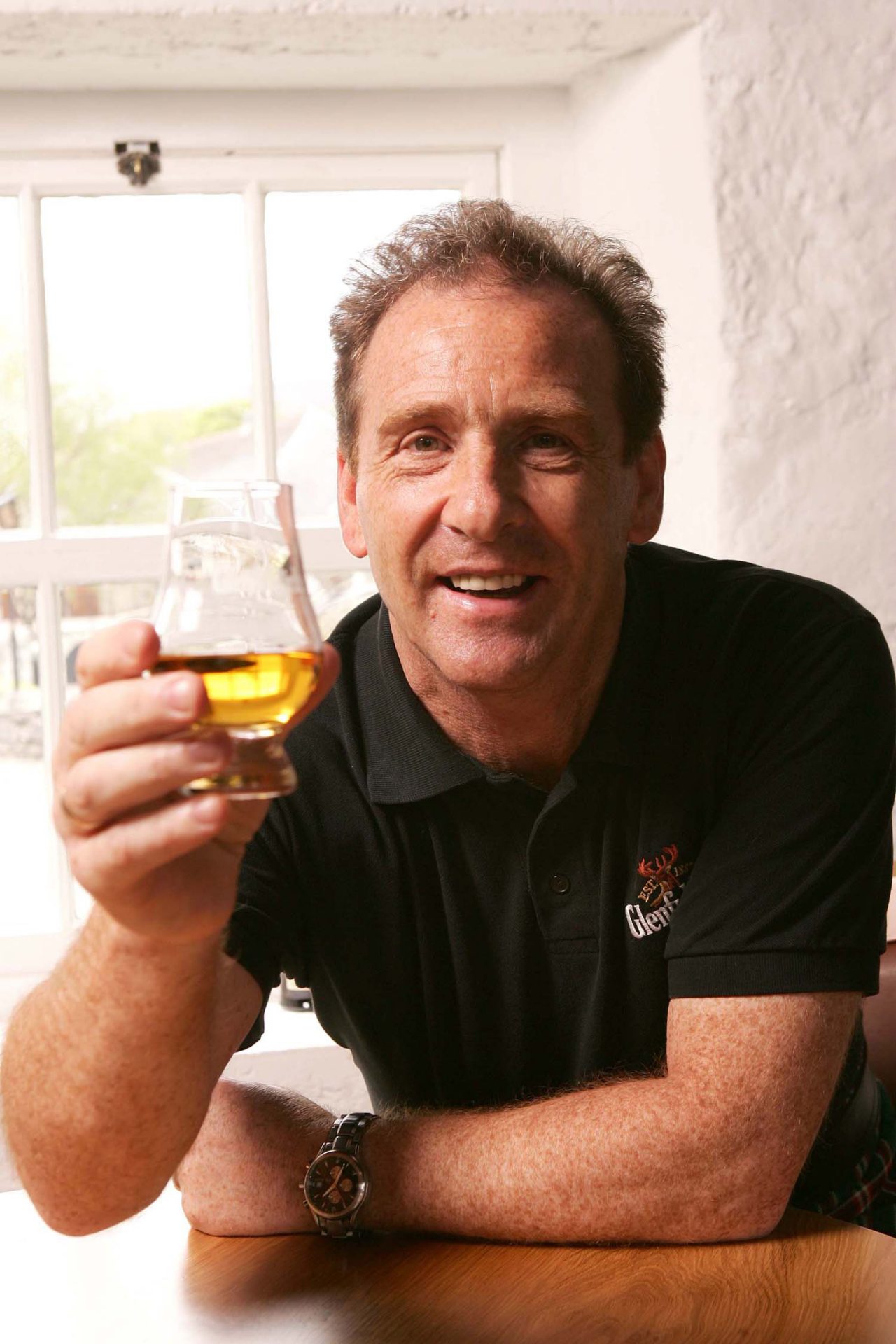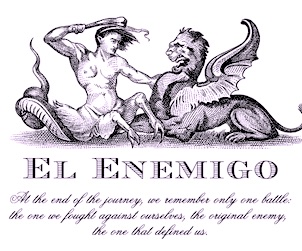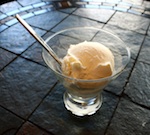Malcolm Jolley attends Italy’s championship of olive oil.
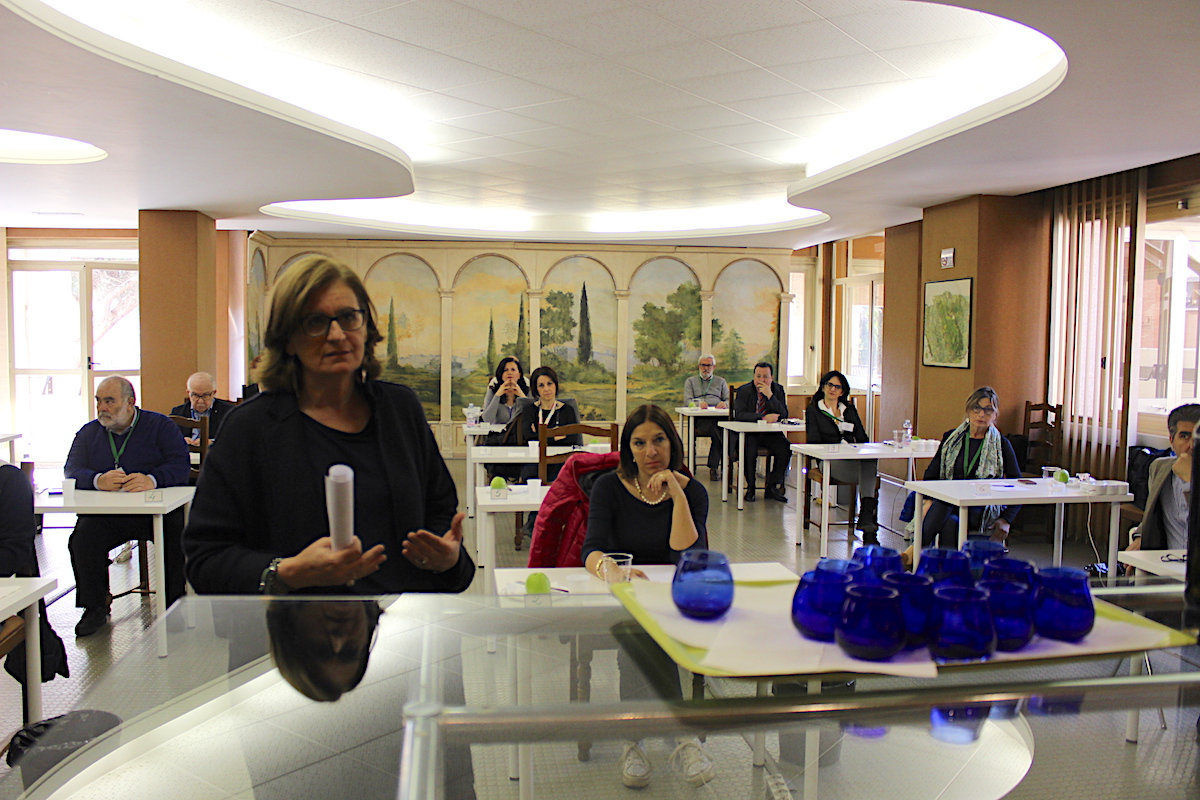
Olive Oil expert Angela Canale presents the judges of Ercole Olivario at the Chamber of Commerce of Perugia.
On March 31, fourteen women and men sat in three rows of classroom chairs. On the small desks in front of them were papers and blue glasses. The group came from, and respectively represented every region in Italy that produces olive oil. They were agronomists, chemists, chefs; they were experts on the subject of olive oil and possessed palates that could distinguish the difference between a flavour note evocative of artichoke and one reminiscent of cardoon. They knew their stuff and, as their their organizer Angela Canale explained through our translator, they were going to give us a little test.
The “us” about to be tested in that room in the Chamber of Commerce of Perugia, was a small group of Canadian and American food journalists. We had been invited by the Italian Trade Agency to cover the Italian olive oil championships, known as Ercole Olivario. Ercole means Hercules in Italian, who was thought as a protector of farmers and agriculture in Ancient Rome, and of course was a champion. Ercole Olivario is organized by the Chamber of Commerce in Perugia. The Chamber of Commerce in every Italian provincial capital is responsible for promoting the products of its surrounding region. Before Ercole Olvario every Chamber of Commerce in an olive oil producing region had organized its own provincial championships. The winners from these heats, then took their champion oils to Perugia, where they were judged, using a multi-faceted, and precise scoring system, to the 14 women and men seated before us, the judges. And what the judges proposed to do on this morning before the awards ceremony was to test our palates to see if we could tell a champion olive oil from one bought in a supermarket. Surprise!
Rome is not just the capital of the Italian Republic, it’s also the provincial capital of the region of Lazio, which stretches from Tuscany and Umbria to the north to Campania to the south, and is renown for its typically Italian agricultural products like wine, pecorino cheese and, of course, olive oil. A few days before Ercole Olivario, we visited the Chamber of Commerce in Rome. There, William Loira, a specialist in agricultural products, led us through an olive oil tasting of Lazio’s five Ercole Olivario finalist oils from the harvest of 2016. We slurped and aerated ourselves through notes of grass, thistle, radish, citrus, what have you. Each oil, like fine wines from the same region, had distinct flavours as well as unifying properties: balance, complexity, mouthfeel. I was glad on that morning in Perugia, when the judges’ challenge was put down that we had some practice, in Rome as well as at the famous Umbrian producer Gradassi. At least, if I failed miserably at this test, I’d have a vague idea of how and why.
Before me and my three colleagues were placed two blue tulip shaped tumblers, and in to each was poured an olive oil form similar shaped bottle covered in foil. The glasses were blue, Canale explained with nods of agreement from the judges, to obscure the colour of the oils. As Loira had also explained in Rome, there is no particular cue of quality or flavour to be made from the hue of an olive oil. A golden and a green oil might share more characteristics and flavour profiles than two of the same shade. Judging was to be done by nose and mouth alone. In one of our glasses was an extra-virgin olive oil,made only from a first and ‘cold’ pressing of the fruit. (“Remember,” Canale told us, “that olive oil is just fruit juice.”) It was also a D.O.P. oil, an oil that carried the guarantee of Denominazione di Origine Protetta, so we would know from studying its bottle exactly where the oil came from and the standards of production it adhered to madated from its consortium of local producers and enforced by the European Union. In other glass was an oil that (he hoped) was made of olives and bottled in Italy, but beyond this we couldn’t be sure of much beyond its suspiciously low price. An easy contest, right? Well sure, but the stakes were high. If any one of us got it wrong how on Earth would we have the credentials to cover Ercole Olivario? Our reputations were on the line in the land of la bella figura!
In the end, we all got it right. It wasn’t hard. The supermarket oil was flat and fatty and coated the tongue with a neutral film. The Extra Virgin DOP oil couldn’t have been more different: it was alive, grassy, spicy and mellow all at the same time. We all took a second sip and nodded at the judges, and looked forward to finding out who was going to win on the next day.
In my next Ercole Olivario post, I will describe the ceremony and why Ercole Olivario holds some improtant lessons for North American consumers and artisan food producers alike. To browse previous GFR posts on Ercole Olivario, click here.

